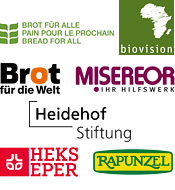News
08.09.2015
EU loses 970 million tonnes of soil per year due to water erosion
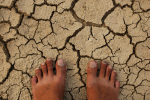
The European Union is losing 970 million tonnes of soil per year due to water erosion, an amount equivalent to a one metre-depth loss of soil from an area the size of the city of Berlin or enough to cover an area twice the size of Belgium with one centimetre of soil. According to a new assessment from the Joint Research Centre (JRC), the European Commission’s in-house science service, an average of 2.46 tonnes per hectare of soil are lost each year across the EU while the average annual rate of soil formation is only 1.4 tonnes per hectare. As it can take up to 100 years to form just one centimetre of new soil, erosion is a major problem with a huge impact on ecosystems, food production, drinking water, carbon stocks and biodiversity. The EU country with the highest annual rate of water erosion was Italy, with 8.46 tonnes of soil per year lost, followed by Slovenia and Austria. These countries are hit hardest due to a combination of high rainfall erosivity and steep topography. The lowest mean annual soil loss rates were found in Finland with 0.06 tonnes per hectare. The JRC estimates that agricultural areas, including arable lands, permanent crops and grasslands, account for 68.3% of total soil losses, while forests account for less than 1%. Agricultural areas have a mean soil loss rate of 3.24 tonnes per hectare. Around 12.7% of arable land in the EU even loses more than 5 tonnes per hectare due water erosion. The authors recommend that policy makers promote anti-erosion measures by financing land management practices such as reduced tillage, the planting of cover crops, keeping plant residues at the soil surface, the maintenance of stone walls, and the increased use of grass margins and contour farming. With respect to the future, the scientists provide an overview of different scenarios. According to some models, the rates of soil loss by water could decrease slightly by 2050, mainly due to growing forest areas. However, an expansion of arable land for food and fuel production could offset these improvements. Other climate change scenarios project that soil loss rates may reach 10 to 15% by 2050 due to an increase of rainfall-induced erosion in Europe. The assessment of water erosion in Europe was published in the journal Environmental Science and Policy. (ab)
03.09.2015
Andean potato varieties preserved in Arctic seed collection

Potato varieties from the Andes will now be preserved for future generations in a seed vault in the Arctic. During a ceremony at the end of August, 750 potato seeds, as well as other wild potato relatives, were deposited by representatives of indigenous communities from Peru, scientists as well as FAO and Norwegian officials at the Svalbard Global Seed Vault, the world’s largest collection of crop diversity. “In a few decades, our planet's food systems will need to feed an additional 2 billion people”, said José Graziano da Silva, Director-General of the UN Food and Agriculture Organisation, who attended the ceremony. “Producing more - and more nutritious - food will be made all the more challenging as a result of climate change. Agricultural biodiversity, like that locked inside the potato seeds being deposited here, is essential to facing these challenges, by helping us develop better, more resilient crops.” The subterranean seed vault in the permafrost, 1300 kilometers beyond the Arctic Circle, currently holds over 860,000 seed samples from all over the world. The potato stems from the South American Andes, where farmers have bred over 2,000 varieties in different shapes and colours, ranging from white to deep purple. However, climate change and diseases pose a significant threat to the tuber, which is a staple food to more than a billion people worldwide. Many potato varieties have been lost in recent decades. In response, farmers and scientists have joined forces to reintroduce different potato varieties. The International Potato Centre in Peru, which holds the world’s largest potato crop collection, is partnering with local and regional initiatives to preserve the diversity of potatoes. Indigenous communities, farmers and organisations have created a Potato Park (Parque de la Papa) near the Peruvian city Cusco to maintain the cultivation of the hundreds of traditional potato varieties and keep the local knowledge of the plant alive. In order to preserve these plant genetic resources for future generations and protect them against natural or man-made disasters, the potato seeds were safely stored at a temperature of 18 degrees below zero. "These seeds, and The Potato Park farmers who are the innovators and leaders of their preservation, have been on a remarkable journey - travelling over 11,000 kilometres from the mountains of Peru to Svalbard,” said Alejandro Argumedes from non-profit organisation Association ANDES, who represented the Andean communities at the ceremony. (ab)
01.09.2015
Climate change may affect humus content of soils, study warns
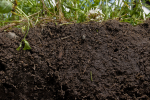
Climate change may be leading to a decline in the humus content of soils, affecting agricultural production worldwide. Scientists from the Technical University Munich (TUM) suspect that the input of organic matter into the soil, the crucial source for humus formation, will decrease as a result of stagnating crop yields in Europe. For the study, which was published in the journal Science of the Total Environment, they analysed crop yield statistics provided by the UN Food and Agriculture Organisation (FAO) which are dating back to the 1960s. The statistics indicate that yields of wheat, barley and maize have been stagnating in Central and Northern Europe since the 1990s. According to soil expert Dr Martin Wiesmeier, the lead author of the study, the stagnation in yields must also have an impact on the humus stocks in soils due to the strong link between crop yields and the input of organic substances into the soil. Given that rising temperatures cause higher levels of humus decomposition while, at the same time, the supply of organic substances is stagnating, the scientists expect a depletion of the humus content in the long term. This could negatively impact the fertility and water storage capacity of soils, which in turn could result in poorer harvests – a “vicious circle” according to Wiesmeier. The authors of the study attribute the stagnation of yields to different factors. One reason could be a shift in priorities in the EU common agricultural policy of the 1990s, due to which less fertiliser was used and leguminous plants were often excluded from crop rotation cycles. However, climate change could have a major impact with temperatures increasingly exceeding the optimum level for plant growth, shifting vegetation periods and more frequent droughts. Other studies had predicted an increased organic matter supply to soils as a result of climate change. In order to prevent the loss of humus, the scientists call for the promotion of agricultural practices that increase soil organic matter: “These include the diversification of crop rotation, the application of green manure and winter greening to reduce soil erosion, optimised soil cultivation, organic farming, agroforestry, and leaving crop residues on fields,” explains co-author Dr Rico Hübner. (ab)
27.08.2015
Syngenta granted patent on conventionally bred tomato
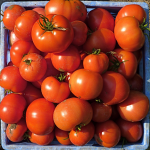
Agrochemical giant Syngenta has received a new patent on a tomato derived from classical breeding. The European Patent Office (EPO) granted a patent for a tomato with a higher content of compounds called flavonols to the Swiss company. Flavonols are known for their health benefits and are said to help prevent cardiovascular diseases and certain cancers. Patent EP1515600, which was published in the August 12th issue of the European Patent Register, covers the tomato plants, seeds and fruits. The “invention” is described as “flavonol expressing domesticated tomato and method of production”. The tomato was developed by crossing wild tomatoes with domesticated varieties and is thus not genetically engineered. Although European patent law prohibits patents on plant varieties and classical breeding methods, the Enlarged Board of Appeal of the EPO ruled in March 2015 in a long-awaited decision on the precedent cases of broccoli and tomato, that plants obtained by essentially biological processes are patentable. No Patents on Seeds!, an international coalition of several hundred organisations from all over Europe, strongly disapproves of this decision and the latest tomato patent, which they consider an unacceptable interpretation of patent law. “By granting these patents, the EPO is ignoring the interests of the general public and simply serving the interests of the patent lobby. If this continues we will all become more and more dependent on a few big international corporates such as Monsanto, Syngenta and Dupont, that file more and more patents on our food plants,” said Christoph Then for No Patents on Seeds! The EPO gains its revenue by granting patents. The coalition, which is supported by organisations such as Greenpeace, GeneWatch, The Berne Declaration, Swissaid and Misereor, calls on European governments to raise the issue in the Administrative Council of the EPO, the only body that could exercise political control over the Patent Office. They hope that by voicing their protest there, governments could stop the EPO from granting further patents of this kind. No Patents on Seeds! is advocating for a revision of European Patent Law to exclude breeding material, plants and animals and food derived thereof from patentability. “Otherwise we will all see the sell-out of the resources needed for our daily food,” Then said. (ab)
24.08.2015
Study finds link between neonicotinoids and honeybee colony losses
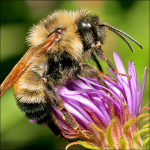
A new study provides evidence of a link between neonicotinoid pesticides and honeybee colony losses. The study led by Fera, a former UK government agency of the Department for Environment, Food and Rural Affairs, combined large-scale pesticide usage and yield observations from oilseed rape fields in England and Wales with data on honeybee loses between 2000 and 2010. According to the research, published in the journal Nature Scientific Reports on Thursday, the total area of land planted with oil seed rape in England and Wales more than doubled from 293,378 hectares to 602,270 hectares over that period. At the same time, the number of seeds treated with Bayer’s imidacloprid pesticide increased from less than 1% of the area planted in 2000 to more than 75% of the area planted with oilseed rape in 2010. The scientists found that farmers who used neonicotinoid seed coatings subsequently used less insecticides to control pests. However, more honey bee colonies were lost as the usage of imidacloprid increased over the 11 year period. The authors said that honey bee colony losses were also linked to adverse weather and showed regional patterns, with beekeepers in Wales suffering the highest losses. Honeybees are important pollinator, being responsible for pollinating at least 90% of commercial crops, especially oilseed rape. The authors conclude: “As long as acute toxins remain the basis of agricultural pest control practices, society will be forced to weigh the benefits of pesticides against their collateral damage. Nowhere is this tension more evident than in the system with the world’s most widely used insecticide, the world’s most widely used managed pollinator and Europe’s most widely grown mass flowering crop.” A European-wide two year ban on neonicotinoids linked to bee deaths came into effect in December 2013. However, the British government temporarily overturned the ban last month on two pesticides for use on oilseed rape. (ab)
17.08.2015
EU citizens waste 47 million tonnes of food each year

Each year, 47 million tonnes of food is wasted in the European Union, of which 80% is avoidable, according to a new study from the Joint Research Centre (JRC) of the European Commission. Europeans waste an average of 123 kg per person annually, or 16% of all food reaching consumers. Avoidable food waste represents by far the largest part, with 97 kg of edible food being wasted each year. The study also took uncertainty into account: Even if the lowest amount of avoidable food waste (45 kg) is assumed, it roughly equals the weight of an apple a day. A maximum of 153 kg per person assumed would equal to 420g, almost a small loaf of bread a day. The study, published in the journal Environmental Research Letters, is based on data from six EU countries - the UK, the Netherlands, Denmark, Finland, Germany and Romania. The UK was the worst culprit, wasting food worth €16.8 billion per year, whilst Romania had the best record. “Theoretically, zero avoidable food waste is a possibility for EU consumers,” write JRC researcher Davy Vanham and colleagues. “This would not only save a lot of money for the consumers themselves, but also for local authorities, which have to pay for food-waste collection and treatment.“ According to the study, reducing the amount of avoidable food waste would also save a large volume of water and avoid losses of reactive nitrogen. The blue water (surface and groundwater resources) associated with the annual 97 kg per person of avoidable food waste averaged 27 litres per capita per day. This is slightly higher than EU municipal water use. The green water (rainwater) footprint was 294 litres per person and day, equivalent to the amount used for crop production in Spain. The amount of nitrogen contained in avoidable food waste was 0.68 kg per capita per year. The study also looked at different product groups. Vegetables, fruit and cereals are wasted most since these food groups have a relatively short shelf-life and are often over-purchased because they are generally cheaper than other products like meat. However, wasted meat had a far greater environmental impact. “Meat production uses much more resources in the first place, so even a little bit of waste can have a big effect in terms of lost resources,” said lead scientist Dr Davy Vanham. Meat accounts for the highest amounts of water and nitrogen resources, followed by wasted cereals. (ab)
13.08.2015
Humans have already exhausted Earth's resources for 2015

August 13th marks Earth Overshoot Day - the day humanity has used up the natural resources the world can supply in a year, according to data from Global Footprint Network, an international sustainability think tank. The date is calculated each year by contrasting the world’s demand on nature (ecological footprint) with the biocapacity - forests, pastures, cropland and fisheries as well as the planet’s ability to replenish resources and absorb waste, including carbon dioxide emissions. The costs of this ecological overspending are becoming more evident by the day, in the form of deforestation, drought, fresh-water scarcity, soil erosion, biodiversity loss and the buildup of carbon dioxide in the atmosphere. The world enters ecological ‘overshoot’ this year seven days earlier than in 2014. The day has moved from early October in 2000 to August 13th this year, showing that humans are exhausting natural resources faster than ever. For the rest of the year, we will be living on resources borrowed from future generations. The United States has busted its annual ecological budget already on July 14th, using twice the resources and services nature can provide. In 1961, humans used only around three-quarters of the capacity Earth has for generating food, timber, fish and absorbing greenhouse gases. According to the Global Footprint Network, we would currently need 1.6 Earths to produce the renewable resources needed to support our footprint. Carbon emissions makes up more than half of the total ecological footprint. “Humanity’s carbon footprint alone more than doubled since the early 1970s, which is when the world went into ecological overshoot. It remains the fastest growing component of the widening gap between the Ecological Footprint and the planet’s biocapacity,” said Mathis Wackernagel, president of the think tank. The carbon footprint is closely linked to other components of the footprint - cropland, grazing land, forests and productive land built over with buildings and roads. As more land is needed for food and timber production, fewer areas are available to absorb carbon from fossil fuels, the Network warns. However, a change of course is still possible. If global carbon emissions were reduced by at least 30% by 2030 compared to today’s levels, as in the International Panel on Climate Change’s suggested scenario, Earth Overshoot Day could be moved back to September 16th by 2030. By contrast, business as usual would mean using the resources equivalent to two planets by 2030, using up the Earth’s resources by June 28th. (ab)
11.08.2015
Scotland to ban cultivation of genetically modified crops
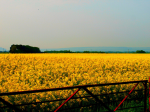
Scotland will ban the cultivation of genetically modified crops, taking advantage of new EU rules, the Scottish minister of rural affairs announced on Monday. “The Scottish Government has long-standing concerns about GM crops - concerns that are shared by other European countries and consumers, and which should not be dismissed lightly,” Rural Affairs Secretary Richard Lochhead told the media. Scotland plans to formally ban genetically modified crops in a move to protect the country’s clean, green image. Mr Lochhead has confirmed that the Scottish Government intends to apply recent EU legislation that allows countries to restrict or ban the cultivation of genetically modified crops on their own territory, even if this is allowed at EU level. The minister announced the Scottish Government would shortly submit a request that Scotland is excluded from any European consents for the cultivation of GM crops, including the variety of genetically modified maize already approved and six other GM crops that are awaiting authorisation. “There is no evidence of significant demand for GM products by Scottish consumers and I am concerned that allowing GM crops to be grown in Scotland would damage our clean and green brand, thereby gambling with the future of our £14 billion food and drink sector,” Richard Lochhead explained. “That is why I strongly support the continued application of the precautionary principle in relation to GM crops and intend to take full advantage of the flexibility allowed under these new EU rules to ban GM crops from being grown in Scotland.” The decision is expected to widen a policy divide with ministers in London, who have already signalled that they plan to allow the commercial cultivation of GM crops such as maize and oilseed rape in England, despite significant resistance from consumers and environmental groups. The Soil Association, a British charity campaigning for organic food and farming, welcomed the ban. Soil Association Policy Director, Peter Melchett said, “Scotland's determination to keep out GM crops is good news for the UK as a whole, because it sets a high standard that England, Wales and Northern Ireland must now live up to.” (ab)
07.08.2015
World food prices fall to lowest level in almost six years
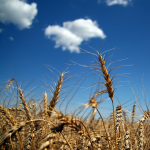
Prices for global agricultural products fell in July to their lowest level in almost six years, the United Nations Food and Agriculture Organization (FAO) said on Thursday. The FAO Food Price Index averaged 164.6 points in July, down 1.7 points or one per cent from June and almost 40 points (19.4%) less than a year earlier. The index measures prices on international markets of five major food commodity groups: cereals, meat, dairy products, vegetable oils and sugar. The drop in food prices was mainly caused by falling prices of dairy products and vegetable oils. According to FAO figures, the dairy price index dropped 7.2% from the previous month, mainly due to lower import demand from China, the Middle East and North Africa and an increase in EU milk production. Vegetable oil prices were 5.5% lower than in June, reaching their lowest value since July 2009. The FAO says the decrease was primarily caused by a fall in international palm oil prices due to increased production in Southeast Asia. Continued weakness in crude oil prices also had an impact on vegetable oil prices. Meat prices for bovine and pig meat as well as poultry remained stable. The overall decline in food prices does not apply to cereal prices. The FAO Cereal Price Index averaged 166.5 points in July, up 2% from June, but still around 10% below July 2014 levels. Unfavourable weather conditions for maize and wheat in North America and Europe kept cereal prices rising. Rice prices remained on a falling trend. The sugar price index rose by 2.5% compared to June, mainly due to poor harvesting conditions in the main producing region of Brazil. (ab)
06.08.2015
UN members agree on goals to end hunger and poverty by 2030

The 193 Member States of the United Nations reached agreement on a sustainable development agenda for the next 15 years. The new agenda to be adopted by world leaders at a summit in September contains 17 Sustainable Development Goals (SDGs) and a set of 169 targets that aim to end poverty and hunger in all their forms by 2030 while protecting the environment. “They address the requirements for all humanity to be able to live decent lives free from poverty, hunger and inequality, with all men and women, girls and boys being able to develop their full potential,” UN Secretary-General Ban Ki-moon told a news conference on Sunday. The outcome document with the title “Transforming our World: The 2030 Agenda for Sustainable Development” concludes a negotiating process that began three years ago with the 2012 UN Conference on Sustainable Development, Rio+20. The 17 SDGs will replace the Millennium Development Goals (MDGs), which expire at the end of the year. Eliminating hunger is a key issue of the new post-2015 agenda. Goal 2 promises to „end hunger, achieve food security and improved nutrition and promote sustainable agriculture”. It contains targets on ending hunger and malnutrition by 2030, doubling the agricultural productivity and incomes of small-scale farmers, ensuring sustainable food production systems and resilient agricultural practices, and maintaining the gentic diversity of seeds, plants and animals. The Swiss organisation Biovision Foundation, which was involved in the negotiations and advocated for a strong goal on food security and sustainable agriculture, welcomed the agreement. Biovision, which was founded by World Food Prize winner and IAASTD co-chair Hans Herren, particularly welcomed the fact that Goal 2 with its eight targets has remained the same throughout the negotiations. Moreover, the outcome document reaffirms the important role and inclusive nature of the Committee on World Food Security (CFS) and underlines that the UN member states „will devote resources to developing rural areas and sustainable agriculture and fisheries, supporting smallholder farmers, especially women farmers, herders and fishers in developing countries, particularly least developed countries.“ The outcome document of the new sustainable development agenda will be formally adopted by member states at a special UN summit from 25-27 September in New York. (ab)
